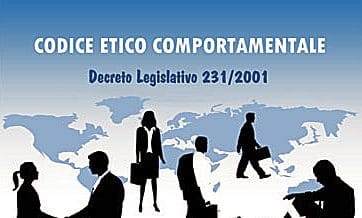
The pharmaceutical sector was one of the most responsive to the innovations introduced by Legislative Decree 231/01 and today, by virtue of the greater sensitivity on the subject, the spotlights are focused on the construction of adequate organizational models, the only tool capable of avoiding the criminal liability of legal persons
Thursday 2 October 2014 – HPS Aboutpharma
 Anti-corruption laws have increasingly complex repercussions on the organizational models of public and private companies. With the concrete risk – in the event of insufficient updating – that the models are not deemed suitable for preventing the sanctions envisaged by the legislative decree 231/2001.
Anti-corruption laws have increasingly complex repercussions on the organizational models of public and private companies. With the concrete risk – in the event of insufficient updating – that the models are not deemed suitable for preventing the sanctions envisaged by the legislative decree 231/2001.
The pharmaceutical sector has been among the most reactive to the innovations introduced by Legislative Decree 231/01 and today, by virtue of the greater sensitivity on the subject, also following various legal proceedings involving some companies producing or distributing medicines, the spotlights are on the construction of adequate organizational models, the only tool capable of avoiding the criminal liability of legal persons and the consequent risk of application of heavy criminal, pecuniary and disqualification sanctions, against the company.
The sector experts who will participate in the conference anticipate some sensitive issues:
 Robert Cursano, lawyer of the Baker & Mckenzie Associated Law Firm, explains what are the 5 rules to be respected in order to build a good organizational model:
Robert Cursano, lawyer of the Baker & Mckenzie Associated Law Firm, explains what are the 5 rules to be respected in order to build a good organizational model:
“'Leadership' is essential, ie the firm will of the top management to encourage the dissemination of ethical values. Then the 'risk assessment' phase, during which the lawyers in charge of drafting the organizational model carry out an in-depth analysis of the risks of committing crimes. The adoption of 'standards and controls'. The necessary protocols are drafted for the purpose of regulating the areas at risk. In reality, two fundamental moments are missing: the 'communication and training' phase, i.e. the dissemination of the document to the employees and, lastly, the 'monitoring' phase”.
Maria Gloria Boni, Member of Supervisory Bodies, specifies the role of a supervisory body in the application of 231/2001:
“First of all, we verify the level of transparency of a company, no less important is the advisory function that is performed when the management requests an advance opinion on the compliance of a company operation. The supervisory body is consulted for risk analyses, examines the level of adherence of the company's management model to the 231 and can request that the model be updated or integrated. In the assessment, the body must take into account the organizational complexity of some company groups. In addition to the control activity, it performs an interface function, through the information flows that should be optimized on the basis of the reports that the company is able to provide”.
Aurelio Giovanelli, partner of the Baker & McKenzie studio, indicates strong similarities between the various regulations (the 231 in Italy, the British Bribery Act and the US FCPA), but also the differences:
 “Unlike the Bribery Act and of 231, which punish both the corruption of a foreign public official and internal corruption, the FCPA it does not fight national corruption because this is prosecuted with other regulatory instruments. The FCPA does not even provide for the crime of private corruption which is included, however, in the text of the Bribery Act and has been included in the 231 system for a year and a half, albeit in a watered-down version. US rules are stricter on so-called 'facilitation payments', small transactions that serve to 'oil' certain mechanisms. The British standards have wider meshes, while in Italy we are closer to the American model".
“Unlike the Bribery Act and of 231, which punish both the corruption of a foreign public official and internal corruption, the FCPA it does not fight national corruption because this is prosecuted with other regulatory instruments. The FCPA does not even provide for the crime of private corruption which is included, however, in the text of the Bribery Act and has been included in the 231 system for a year and a half, albeit in a watered-down version. US rules are stricter on so-called 'facilitation payments', small transactions that serve to 'oil' certain mechanisms. The British standards have wider meshes, while in Italy we are closer to the American model".
 LEGISLATIVE DECREE 8 June 2001, n. 231
LEGISLATIVE DECREE 8 June 2001, n. 231
Article 5
Responsibility of the institution
1. The entity is liable for crimes committed in its interest or to its advantage:
a) by people who hold representation, administration or management functions of the entity or
of one of its organizational units with financial and functional autonomy as well as by people who
exercise, even de facto, the management and control of the same;
b) by persons subject to the management or supervision of one of the persons referred to in letter a).
2. The entity is not liable if the persons indicated in paragraph 1 have acted in the exclusive interest
own or third party.
Article 6
Persons in top positions and organization models of the entity
1. If the offense was committed by the persons indicated in article 5, paragraph 1, letter a), the entity
responds if it proves that:
a) the management body has adopted and effectively implemented, before the offense was committed,
organization and management models suitable for preventing crimes of the type that occurred;
b) the task of supervising the functioning and observance of the models and taking care of them
updating has been entrusted to a body of the institution with independent powers of initiative and
check;
c) the persons committed the crime by fraudulently eluding the organization and
management;
d) there has been no omission or insufficient supervision by the body referred to in letter b).
2. In relation to the extension of delegated powers and the risk of committing offences, the models referred to
under letter a), of paragraph 1, must meet the following requirements:
a) identify the activities in which crimes may be committed;
b) envisage specific protocols aimed at planning the formation and implementation of decisions
of the entity in relation to the crimes to be prevented;
c) identify ways of managing the financial resources suitable for preventing the commission of
crimes;
d) establish information obligations towards the body responsible for supervising the
operation and observance of models;
e) introduce a disciplinary system suitable for sanctioning failure to comply with the measures indicated
in the model.
3. The organization and management models can be adopted, guaranteeing the requirements referred to in
paragraph 2, on the basis of codes of conduct drawn up by the associations representing the entities,
communicated to the Ministry of Justice which, in agreement with the competent Ministries, can formulate,
within thirty days, observations on the suitability of the models to prevent crimes.
4. In small entities, the tasks indicated in letter b), of paragraph 1, may be
carried out directly by the management body.
4-bis. In corporations, the board of statutory auditors, the supervisory board and the committee for the
management control can perform the functions of the supervisory body referred to in paragraph 1,
letter b) (1).
5. In any case, the confiscation of the profit that the entity has derived from the crime is ordered, also in the form for
equivalent.
(1) Paragraph inserted by article 14, paragraph 12, of Law 12 November 2011, n. 183, starting from 1 January 2012, ai
pursuant to article 36, paragraph 1, of the same Law 183/2011
Ed.: companies usually make informants sign acknowledgment of the laws in force on corruption. In this way, whatever illegal thing happens, even on the orders of the Area Manager or some other senior figure, the responsibility falls solely and exclusively on the ISF. In fact, the signature on that document shows that the company has informed the ISF and therefore, even if he has "obeyed" his superiors, the company is not responsible, unless there is a written document demonstrating that he has been instigated to commit a crime.
In cases of "instigation", the ISF should denounce the superior for the crime it would like him to commit. In the absence of a register or some other form of protection, it is easy to say, but ...





